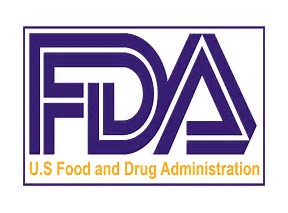Did the National Academy of Medicine consider integrative in their opioids report?
August 29, 2017
 by John Weeks, Publisher/Editor of The Integrator Blog News and Reports In 2011, the Institute of Medicine (IOM) under the leadership of Harvey Feinberg, MD produced an Affordable Care Act-mandated “blueprint” for pain treatment in the U.S. Complementary and alternative medicine approaches had significant visibility. Now the National Academy of Medicine (NAM)—formerly the Institute of Medicine (IOM)—has published a related new consensus report entitled “Pain Management and the Opioid Epidemic: Balancing Societal and Individual Benefits a and Risks of Prescription Opioid Use.” The report is freely available to download.
by John Weeks, Publisher/Editor of The Integrator Blog News and Reports In 2011, the Institute of Medicine (IOM) under the leadership of Harvey Feinberg, MD produced an Affordable Care Act-mandated “blueprint” for pain treatment in the U.S. Complementary and alternative medicine approaches had significant visibility. Now the National Academy of Medicine (NAM)—formerly the Institute of Medicine (IOM)—has published a related new consensus report entitled “Pain Management and the Opioid Epidemic: Balancing Societal and Individual Benefits a and Risks of Prescription Opioid Use.” The report is freely available to download.  Such reports are typically meant to guide policy makers, foundations, state and local legislators toward solutions. I approached the document with a single question; namely, did integrative and “non-pharmacologic” therapies and practitioners get the attention of this 2017 Committee, convened under NAM president Victor Dzao, MD? Policy-Making Without Representation The first indication of what one might find relative to inclusion of integrative approaches in such report often comes from reviewing the members of the committee that was impaneled to guide the NAM staff. Unlike the 2011 IOM committee which included UCLA integrative pediatrician Lonnie Zelzer, MD, none are well-known integrative academic medicine leaders from the 70 medical schools in the Academic Consortium for Integrative Medicine and Health. Also in contradistinction to the 2011 Committee, which included a pain expert from the “licensed CAM” professions, Rick Marinelli ND, MAOM, no members from the licensed “CAM” professions were represented. The lack of representative of integrative medicine professionals might be explained by the focus of the Committee. It’s core task was “to develop a report to inform the U.S. Food and Drug Administration (FDA) as to the state of the science regarding prescription opioid abuse and misuse.” Yet the Committee’s charge, as suggested in its name, appears broader: “Committee on Pain Management and Regulatory Strategies to Address Prescription Opioid Abuse.” And its top two tasks each suggest that the final report to the FDA should touch subjects broader than pharmaceuticals. The Committee is to provide “an update on the state of the science of pain research, care, and education since the 2011 IOM report and characterize the evolving role of opioid analgesics in pain management.” The Committee’s second itemized task is similar: “Review the available evidence on best practices with regard to safe and effective pain management.”
Such reports are typically meant to guide policy makers, foundations, state and local legislators toward solutions. I approached the document with a single question; namely, did integrative and “non-pharmacologic” therapies and practitioners get the attention of this 2017 Committee, convened under NAM president Victor Dzao, MD? Policy-Making Without Representation The first indication of what one might find relative to inclusion of integrative approaches in such report often comes from reviewing the members of the committee that was impaneled to guide the NAM staff. Unlike the 2011 IOM committee which included UCLA integrative pediatrician Lonnie Zelzer, MD, none are well-known integrative academic medicine leaders from the 70 medical schools in the Academic Consortium for Integrative Medicine and Health. Also in contradistinction to the 2011 Committee, which included a pain expert from the “licensed CAM” professions, Rick Marinelli ND, MAOM, no members from the licensed “CAM” professions were represented. The lack of representative of integrative medicine professionals might be explained by the focus of the Committee. It’s core task was “to develop a report to inform the U.S. Food and Drug Administration (FDA) as to the state of the science regarding prescription opioid abuse and misuse.” Yet the Committee’s charge, as suggested in its name, appears broader: “Committee on Pain Management and Regulatory Strategies to Address Prescription Opioid Abuse.” And its top two tasks each suggest that the final report to the FDA should touch subjects broader than pharmaceuticals. The Committee is to provide “an update on the state of the science of pain research, care, and education since the 2011 IOM report and characterize the evolving role of opioid analgesics in pain management.” The Committee’s second itemized task is similar: “Review the available evidence on best practices with regard to safe and effective pain management.”  Non-Pharmacologic Treatments Highlighted Despite the lack of integrative personnel on the Committee, and despite the target audience FDA’s pharmaceutical orientation, “Pain Management and the Opioid Epidemic” is remarkably inclusive of non-pharmacologic approaches throughout. The second segment of the 393-page report reviews the science. Pages 90-95 focus on “Non-Pharmacologic Treatments.” Half-page to full page long analyses are presented in seven areas:
Non-Pharmacologic Treatments Highlighted Despite the lack of integrative personnel on the Committee, and despite the target audience FDA’s pharmaceutical orientation, “Pain Management and the Opioid Epidemic” is remarkably inclusive of non-pharmacologic approaches throughout. The second segment of the 393-page report reviews the science. Pages 90-95 focus on “Non-Pharmacologic Treatments.” Half-page to full page long analyses are presented in seven areas: - Acupuncture
- Manual Therapies
- Physical Therapy and Exercise
- Cognitive Behavioral Therapy (CBT)
- Mindfulness Meditation
- Placebo Analgesia
- Focus on Self-Management
 Comment: Credit the NAM: the level of inclusion of integrative strategies is balanced, hopeful and a step in the right direction. This is especially so given that no known integrative medicine advocates served on the Committee. The evidence alone would appear to have permeated the policy direction. (Then again, who knows which of the Committee members, or their spouses, had a personal story of a quality acupuncture or mind-body experience that may have influenced choices.) The National Pain Strategy similarly showed significant engagement with complementary and integrative professionals despite almost no participation from the integrative health community among the 80 who set the strategy. Perhaps the tide has sufficiently turned that “policy without representation” may no longer be fighting words. One does wonder, however, what such a report might have looked like had one or two policy smart integrative representatives been in the dialogue. The non-inclusion of manual therapies in the core list is a concern. Odd that they were excluded, then the writers tossed massage and spinal manipulation a few bones in latter text. I contacted three experts on the comparative literature for chiropractic who shared perspectives. All assumed that the Committee must not have access “the two most recent systematic reviews on SM, Chou et al in Annals (2/17) and Paige et al in JAMA (4/17).” One also noted also that the language that led to the exclusion of spinal manipulative therapy is that it is “no better than” other common interventions. He added that they might as well have included it by spinning it as “just as good as” other common interventions. He added: “One would think that in the midst of an opioid crisis that we’d be talking up the value of ANY therapy that is “just as good as” medication, including SMT.” Point made. Editor’s note: This article is not edited and the authors are solely responsible for the content. The views and opinions expressed in this article are those of the authors and do not necessarily reflect the official policy or position of Integrative Practitioner.
Comment: Credit the NAM: the level of inclusion of integrative strategies is balanced, hopeful and a step in the right direction. This is especially so given that no known integrative medicine advocates served on the Committee. The evidence alone would appear to have permeated the policy direction. (Then again, who knows which of the Committee members, or their spouses, had a personal story of a quality acupuncture or mind-body experience that may have influenced choices.) The National Pain Strategy similarly showed significant engagement with complementary and integrative professionals despite almost no participation from the integrative health community among the 80 who set the strategy. Perhaps the tide has sufficiently turned that “policy without representation” may no longer be fighting words. One does wonder, however, what such a report might have looked like had one or two policy smart integrative representatives been in the dialogue. The non-inclusion of manual therapies in the core list is a concern. Odd that they were excluded, then the writers tossed massage and spinal manipulation a few bones in latter text. I contacted three experts on the comparative literature for chiropractic who shared perspectives. All assumed that the Committee must not have access “the two most recent systematic reviews on SM, Chou et al in Annals (2/17) and Paige et al in JAMA (4/17).” One also noted also that the language that led to the exclusion of spinal manipulative therapy is that it is “no better than” other common interventions. He added that they might as well have included it by spinning it as “just as good as” other common interventions. He added: “One would think that in the midst of an opioid crisis that we’d be talking up the value of ANY therapy that is “just as good as” medication, including SMT.” Point made. Editor’s note: This article is not edited and the authors are solely responsible for the content. The views and opinions expressed in this article are those of the authors and do not necessarily reflect the official policy or position of Integrative Practitioner.



















SHARE